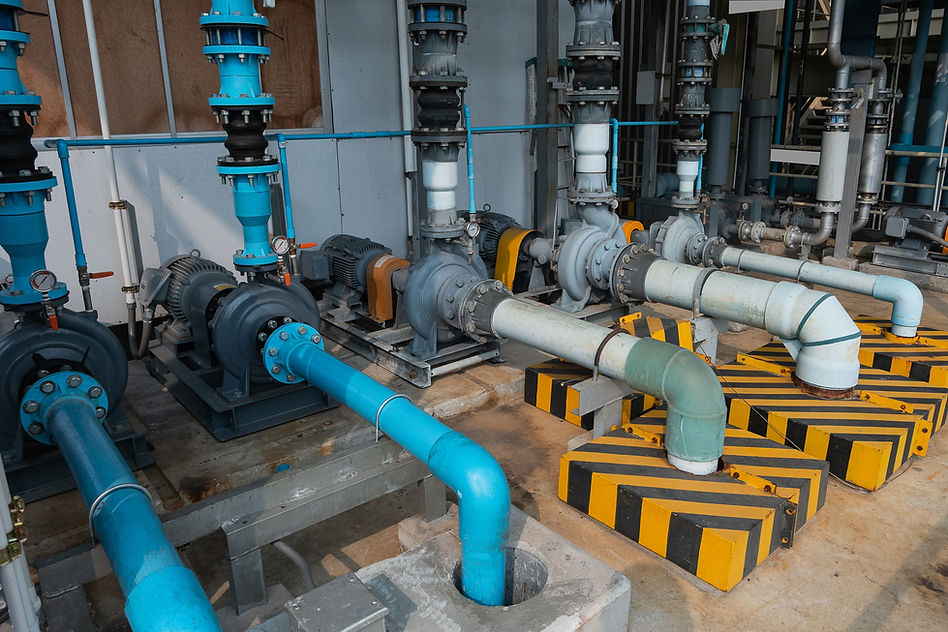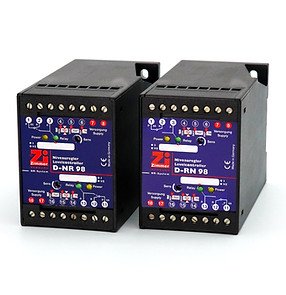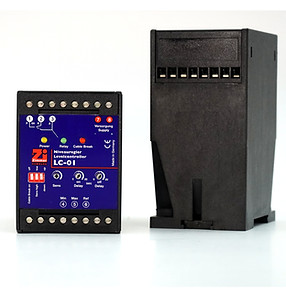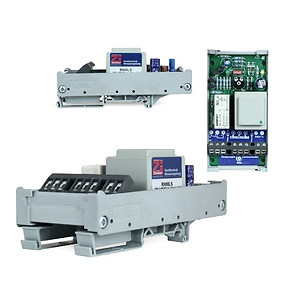
Level Controller
Reliable switching module for precise level regulation.
What is a level controller?
The level controller serves as the central switching unit for conductive level measurement. It transmits a safe measuring signal to the probe’s electrodes. When the conductive medium closes the circuit between the electrodes, the controller detects this change and converts it into a precise switching command.
This enables fully automatic and reliable control of pumps, valves, or alarm systems.

Designed for maximum safety and efficiency
As a manufacturer, we place the highest priority on designing level controllers that deliver reliable and long-lasting performance in harsh industrial environments.
Engineered for continuous operation
-
Interference-free measurement: The AC-powered electrode supply prevents electrolysis at the probes and ensures long-lasting, precise signal detection.
-
High operational reliability: A wide switching range ensures reliable performance even under fluctuating media conductivity.
-
Galvanic isolation: The safe electrical separation of supply and measuring voltage protects your entire system and personnel.
-
Integrated safety circuit: In the event of a power failure, the system transitions automatically into a defined safe state.
The result for your operations
-
Increased efficiency: Automatic level control prevents overflow and dry-run conditions, helping to reduce losses and conserve valuable resources.
-
Increased safety: Integrated safety circuits and precise alarms provide reliable warnings of critical level conditions, protecting your equipment and processes.
-
Lower operating costs: Avoiding equipment damage and optimizing resource usage helps reduce long-term operating costs.
-
Reliable operation: Robust, low-maintenance technology enables continuous and user-friendly operation without the need for constant manual supervision.
Typical areas of application

Pump control
-
Demand-driven operation of filling and discharge pumps with integrated dry-run protection.
Valve and process regulation
-
Precise actuation of solenoid valves for accurate mixing ratio control.
Alarm & safety functions
-
Reliable activation of visual or acoustic alarms in the event of overfill or leakage.
Dosing & mixing applications
-
Accurate control of filling operations in food and chemical production.
Building automation
-
Reliable control of refill systems for both technical installations (heating systems, fire suppression systems, cisterns) and recreational water systems (pools and ponds).
Our level controllers
Practical functions for every application
Min/Max control (NR/RN)
-
As a core function, it automatically controls pumps and valves or issues alarm signals to precisely regulate the fill level between two defined thresholds (minimum and maximum)
Adjustable response delay
-
Prevents false triggering caused by wave movements in the tank (adjustable delay: 0.5–10 s)
Adjustable sensitivity
-
For optimal adaptation to media with extremely high or low conductivity


NR 98 / RN 98
Detection of 1 or 2 levels
• LED indicators for relay status and system operation

D-NR 98 / D-RN 98
Detection of 2, 3 or 4 levels
• 2 independant functions can be freely combined
• LED indicators for relay status and system operation

D-NR / RN 98
Detection of 2, 3 or 4 levels
• 2 independant functions can be freely combined
• LED indicators for relay status and system operation

LC-01
Detection of 1 or 2 levels
• Function switch UP(NR) / DOWN(RN)
• conductive measuring principle (conductive media)
• LED indicators: Operation – Relay – Cable break
• Switch-on and switch-off delay
• Output: 1 changeover contact 250V AC / 6A

NR / RN 01
Detection of 1 or 2 levels
• Function NR or RN adjustable via jumper
• LED indicators for relay status and system operation

NR 98LS, RN 98LS
Detection of 1 or 2 levels
• Installation in distribution or control cabinets
• LED indicators for relay status and system operation
Solutions for potentially explosive atmospheres (ATEX)
For use in potentially explosive atmospheres (ATEX), the level probe is connected to the controller via an intrinsically safe barrier. Both the level controller and the safety barrier are installed safely outside the hazardous area, with only the probe itself located within the Ex zone.
Your partner for high-quality and reliable level detection technology.
WE SAY THANK YOU FOR ALMOST 70 YEARS OF TRUST.

